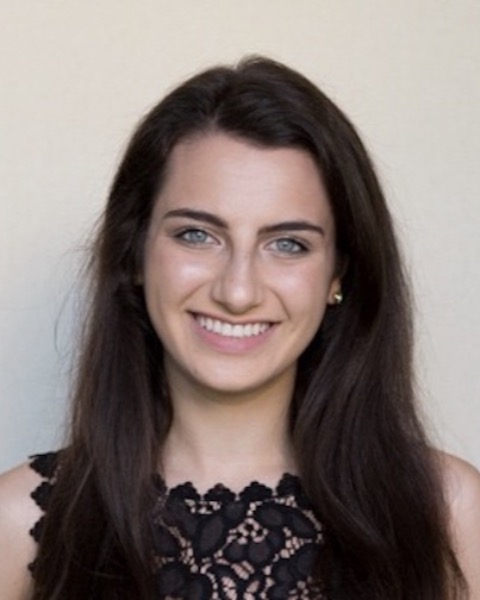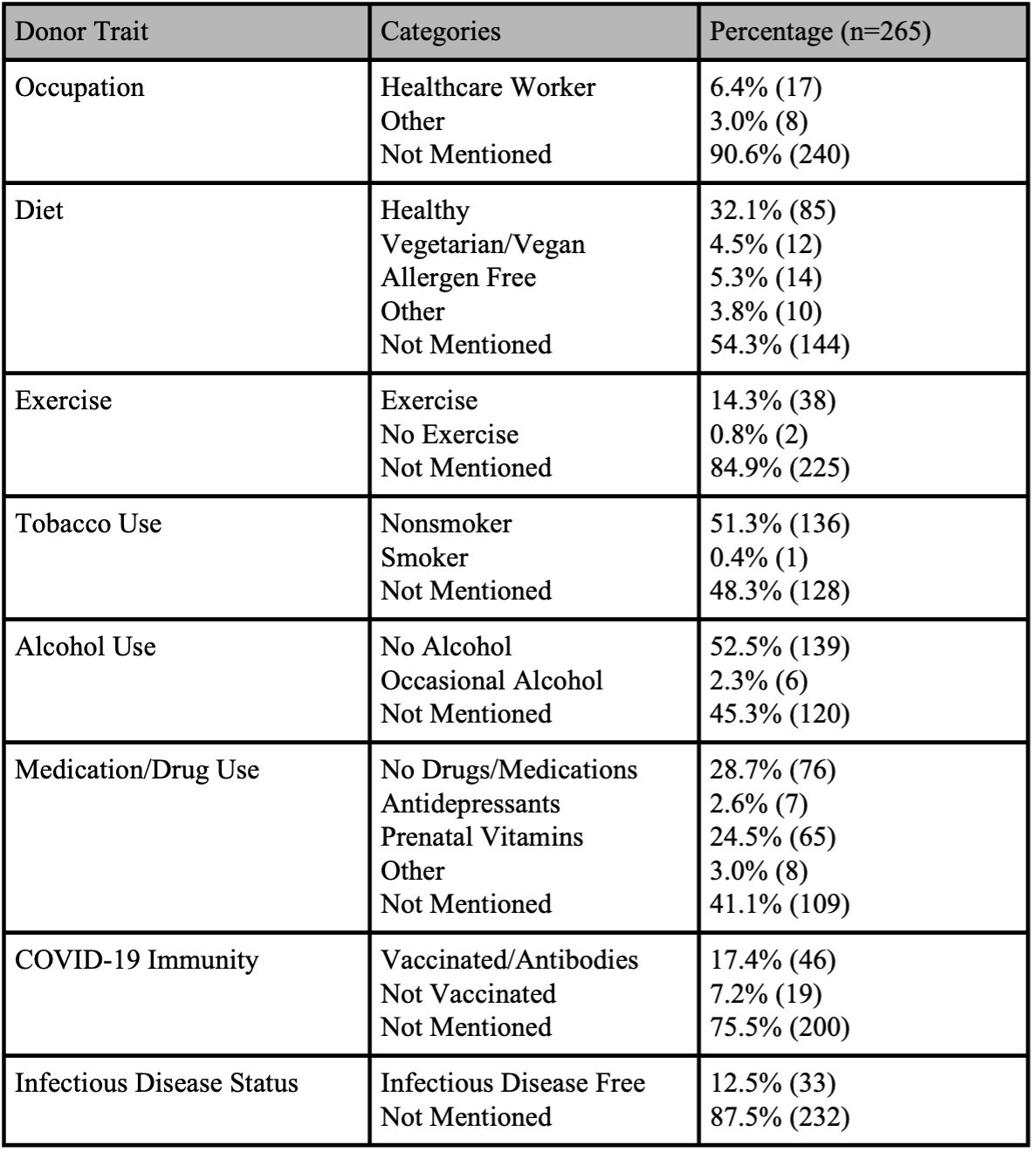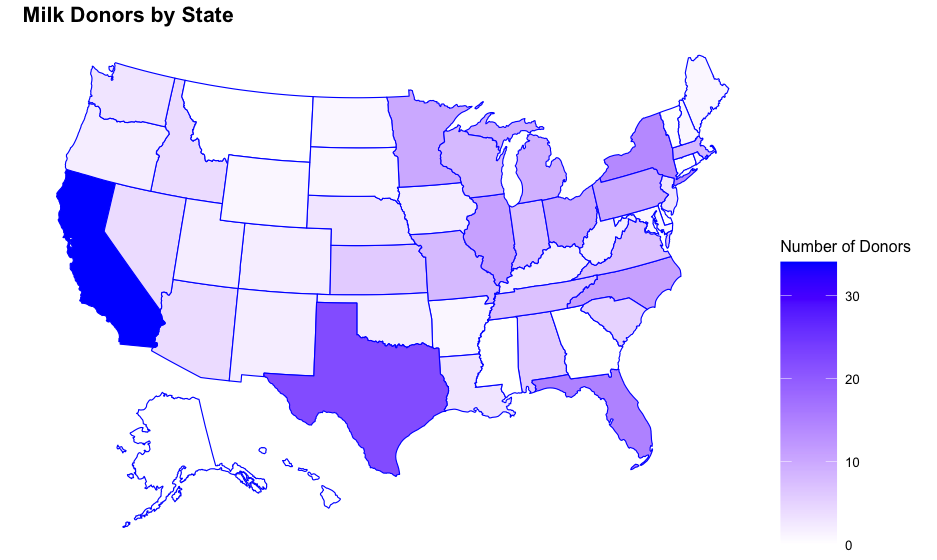Breastfeeding/Human Milk
Category: Abstract Submission
Breastfeeding/Human Milk II
428 - Examining Self-Reported Maternal Traits in Unregulated Donor Breast Milk Exchange Websites
Sunday, April 24, 2022
3:30 PM - 6:00 PM US MT
Poster Number: 428
Publication Number: 428.302
Publication Number: 428.302
Hannah E. Rosenthal, Cohen Children's Medical Center, Hauppauge, NY, United States; Allison Lin, Cohen Children's Medical Center, Port Washington, NY, United States; Duy Q. Pham, Cohen Children's Medical Center, New York, NY, United States; Ruth Milanaik, Donald and Barbara Zucker School of Medicine at Hofstra/Northwell, Great Neck, NY, United States

Hannah E. Rosenthal, BS
Visiting Scholar
Cohen Children's Medical Center
Hauppauge, New York, United States
Presenting Author(s)
Background: Donor breast milk is often sought after by caregivers who cannot produce adequate breast milk to feed their infant. Although regulated milk banks can provide pasteurized donor milk, breast milk is easily accessible on unregulated online forums for direct purchase. These sources of donor breast milk pose significant risks to the receiving infant due to the possibility of infectious diseases, drugs, or other contaminants. Many advertisements on such websites include characteristics of the donor, such as diet and medical history, for potential customers to peruse and evaluate. While previous studies have investigated breast milk donated to formal sources, our study is the first to investigate advertisements on unregulated websites.
Objective: To identify self-reported characteristics in online donor breast milk advertisements.
Design/Methods: The most recent posts on “OnlyTheBreast.com” and “BreastfeedingMomsUnite.com” were collected and coded for mentions of the mother’s diet, exercise, drug and medication use, COVID-19 vaccination status, infectious disease status, and other information. Repeated posts were excluded from the analysis. Descriptive analysis was performed.
Results: 265 total advertisements were collected. The mean age of donors was 27.7 years (19-38), and the mean age of children of donors was 4.3 months (0.25-18 months). The mean cost/ounce was $1.70 ($0.25-$9.00). The greatest number of donors were from California (Fig 1). The most common reported traits included medication/drug use, with 58.9% of posts mentioning medication use, and alcohol use, with 54.7% of posts mentioning no/occasional alcohol consumption. The least mentioned characteristic was occupation, with only 9.4% of posts mentioning the donor's job, and infectious disease status, with mentions in only 12.5% of posts (Table 1).Conclusion(s): Our results revealed that while many advertisements mentioned a lack of alcohol, smoking, or drug use, the vast majority had no mention of testing for STI/other diseases that are verified by milk banks. This is concerning, as many diseases can be transmitted via breast milk to infants. Although newborns can acquire COVID-19 protection through antibodies in breastmilk, few donors reported having COVID-19 antibodies, acquired through infection or vaccination. More resources should be dedicated to regulated milk banks in order to decrease barriers to access for new parents who may otherwise turn to unregulated sources for donor milk. Physicians who encounter caregivers in need of donor milk should counsel them on the dangers of using unregulated milk and refer them to appropriate resources.
Table 1. Donor traits advertised in online posts selling breast milk
Figure 1. Milk Donors by State Darker colors indicate a greater number of donors. California had the highest number of donors (n=34), followed by Texas (n=22). The lowest number of donors were from Alaska, Connecticut, Delaware, Georgia, Hawaii, Mississippi, Montana, and Vermont (n=0).
Darker colors indicate a greater number of donors. California had the highest number of donors (n=34), followed by Texas (n=22). The lowest number of donors were from Alaska, Connecticut, Delaware, Georgia, Hawaii, Mississippi, Montana, and Vermont (n=0).
Objective: To identify self-reported characteristics in online donor breast milk advertisements.
Design/Methods: The most recent posts on “OnlyTheBreast.com” and “BreastfeedingMomsUnite.com” were collected and coded for mentions of the mother’s diet, exercise, drug and medication use, COVID-19 vaccination status, infectious disease status, and other information. Repeated posts were excluded from the analysis. Descriptive analysis was performed.
Results: 265 total advertisements were collected. The mean age of donors was 27.7 years (19-38), and the mean age of children of donors was 4.3 months (0.25-18 months). The mean cost/ounce was $1.70 ($0.25-$9.00). The greatest number of donors were from California (Fig 1). The most common reported traits included medication/drug use, with 58.9% of posts mentioning medication use, and alcohol use, with 54.7% of posts mentioning no/occasional alcohol consumption. The least mentioned characteristic was occupation, with only 9.4% of posts mentioning the donor's job, and infectious disease status, with mentions in only 12.5% of posts (Table 1).Conclusion(s): Our results revealed that while many advertisements mentioned a lack of alcohol, smoking, or drug use, the vast majority had no mention of testing for STI/other diseases that are verified by milk banks. This is concerning, as many diseases can be transmitted via breast milk to infants. Although newborns can acquire COVID-19 protection through antibodies in breastmilk, few donors reported having COVID-19 antibodies, acquired through infection or vaccination. More resources should be dedicated to regulated milk banks in order to decrease barriers to access for new parents who may otherwise turn to unregulated sources for donor milk. Physicians who encounter caregivers in need of donor milk should counsel them on the dangers of using unregulated milk and refer them to appropriate resources.
Table 1. Donor traits advertised in online posts selling breast milk

Figure 1. Milk Donors by State
 Darker colors indicate a greater number of donors. California had the highest number of donors (n=34), followed by Texas (n=22). The lowest number of donors were from Alaska, Connecticut, Delaware, Georgia, Hawaii, Mississippi, Montana, and Vermont (n=0).
Darker colors indicate a greater number of donors. California had the highest number of donors (n=34), followed by Texas (n=22). The lowest number of donors were from Alaska, Connecticut, Delaware, Georgia, Hawaii, Mississippi, Montana, and Vermont (n=0).